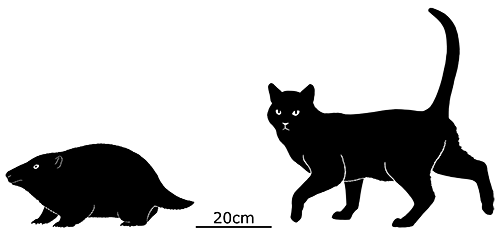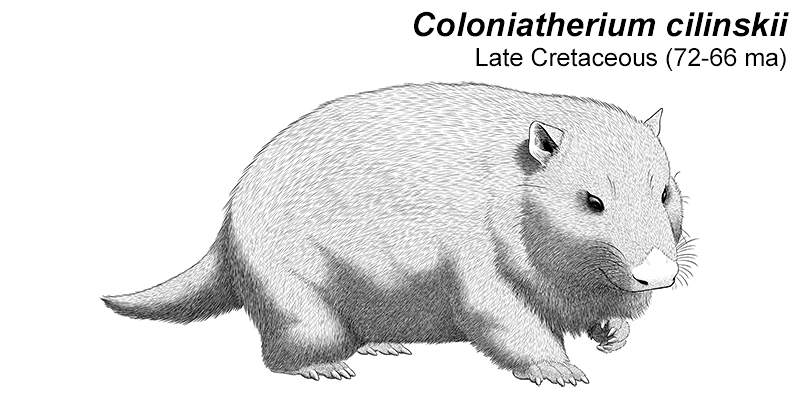Coloniatherium
Most dryolestoids seem to have been insectivores and omnivores, but one group known as the mesungulatids specialized for herbivory. Although mostly known only from teeth and skull fragments, the size of these pieces indicates that they were surprisingly large compared to their other close relatives – making them some of the biggest mammals around at the time.
They had fairly long blunt snouts with strong jaws and teeth adapted for crushing and grinding plants, and may even have been able to chew with a side-to-side motion similar to placental ungulates. In fact, mesungulatids were initially mistaken for early ungulates based on how convergently similar their teeth looked, hence their group’s name.
Known from the Late Cretaceous of Argentina (72-66 mya), Coloniatherium was one of the bigger mesungulatids (although not as large as the dog-sized Cenozoic Peligrotherium). Its full body size is uncertain, but it might have been similar to a modern marmot at around 50cm in length (1′8″).
It lived in a coastal plain or estuary environment and was one of the most common mammals in its ecosystem, suggesting mesungulatids were a particularly successful lineage despite reaching sizes where they would potentially have been directly competing with small herbivorous dinosaurs.


